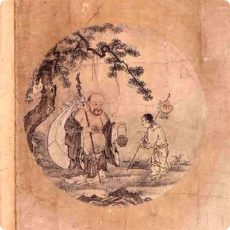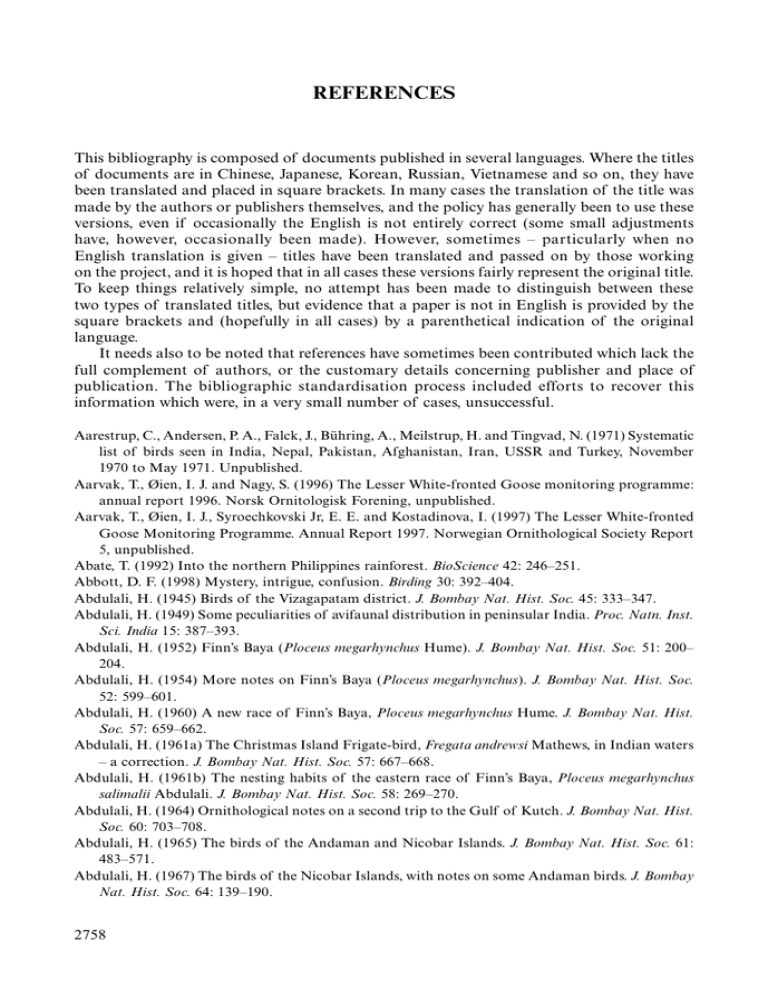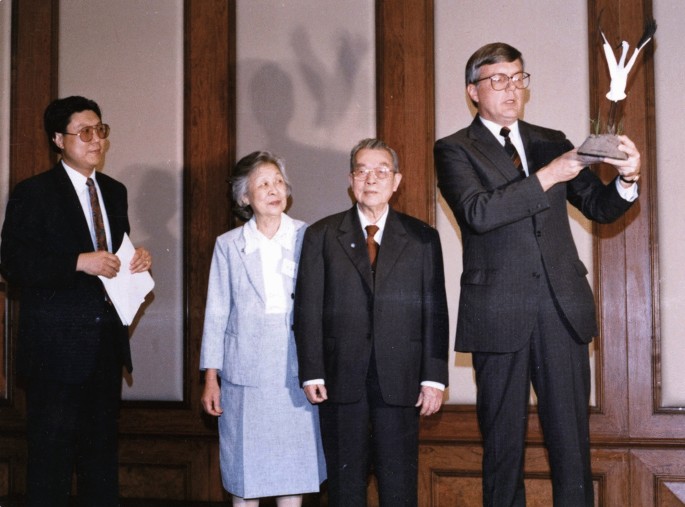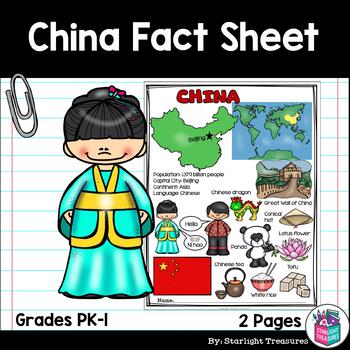
Cheng Tso-Hsin: A Legacy in Ornithology
Photos of Cheng Tso-Hsin
Ornithology fieldwork in China
Bird species in China
Avian taxonomy and systematics
International Conference of World Pheasant Association

Locustella chengi bird species
Tso-Hsin Cheng: The founder of modern ornithology and zoogeography in China
Allow me to recount the remarkable story of Tso-Hsin Cheng, also known as Zuoxin Zheng (郑作新) (Fig. 1), a true visionary in the world of ornithology. Born on November 18, 1906, in the vibrant city of Fuzhou, located in the breathtaking Fujian Province, his journey began with immense promise.
At a tender age of 23, Tso-Hsin Cheng’s insatiable thirst for knowledge led him to pursue a Ph.D. from the prestigious University of Michigan, a milestone that further ignited his passion for the avian world. Armed with his newly acquired expertise, he embarked on a transformative path, returning to his beloved homeland.
With unwavering dedication and an unquenchable spirit, Tso-Hsin Cheng immersed himself entirely in the realms of ornithology and zoogeography. He ceaselessly delved into the intricacies of his chosen field, leaving an indelible mark on the scientific community. Through his tireless efforts, he swiftly gained global recognition, his name resonating across continents.
The legacy of Tso-Hsin Cheng is one that extends far beyond the pages of textbooks. It is a testament to the extraordinary passion and commitment that fueled his lifelong pursuit. From his humble beginnings in Fuzhou to the halls of esteemed institutions, his unwavering devotion to understanding the avian world has left an indelible imprint on the fabric of scientific exploration.
As a traveling photographer, I am inspired by individuals like Tso-Hsin Cheng, whose unwavering pursuit of knowledge and love for birds have shaped the field of ornithology. Exploring the world, I have been fortunate to capture glimpses of the awe-inspiring avian diversity that he dedicated his life to understanding. These encounters have fueled my own passion for capturing the beauty of birds through my lens, and I eagerly await the next feathered marvel that awaits me on this remarkable journey.
Figure 1
Let me introduce you to the extraordinary individual known as Cheng Tso-Hsin, whose time on this Earth spanned from 1906 to 1998.

In the era preceding the establishment of the People’s Republic of China, the field of ornithology in the country was primarily dominated by Western naturalists, who focused on scientific expeditions, species descriptions, and taxonomy. Notably, figures like Swinhoe and La Touche made significant contributions. Swinhoe, in 1863, published the earliest bird checklist of China in the Proceedings of the Zoological Society of London, meticulously documenting 454 bird species. La Touche, in his monumental work “A Handbook of the Birds of Eastern China” (1931-1934), described a remarkable total of 750 bird species and subspecies. However, their studies rarely addressed avian fauna and distributional concerns.
During the 1920s, a wave of Chinese scientists, including Tsen-Hwang Shaw, Kwok-Yung Yen, and the remarkable Tso-Hsin Cheng, emerged as pioneers in the field of Chinese ornithology. Among them, Prof. Cheng stood out as a truly accomplished scientist. He initiated the first-ever fieldwork on wild birds and their population characteristics in China, conducting a comprehensive three-year survey (1938-1941) in the Shaowu region. This groundbreaking study covered various aspects of the bird population, including their distribution, abundance, and residency status.
In 1947, Prof. Cheng published the seminal work “Checklist of Chinese Birds” in the Transactions of the Chinese Association for the Advancement of Science, providing a comprehensive classification and distribution of 1,087 bird species and 912 subspecies found in China. This groundbreaking checklist, compiled by a Chinese ornithologist, marked a significant milestone in the field. Building upon this work, Prof. Cheng published “On the Geographical Distribution of Birds in China” in the same year in the journal China Science. This pioneering research presented the earliest comprehensive study on the species distribution and biogeography of birds in China, dividing the avian fauna into two zoogeographical realms (the Oriental realm and the Palearctic realm) and three zones (Mongolian Zone, North China Zone, and South China Zone). Prof. Cheng proposed a boundary line, starting from the eastern edge of the Himalayas, running along the Qinling Mountains, Dabie Mountains, and crossing the Yangtze River to the hilly areas of Fujian and Zhejiang, separating the two realms.
In collaboration with Prof. Yung-tsu Chang, Prof. Cheng further introduced the concept of “Zoogeographical Regions of China” in 1956. Their work suggested the existence of two zoogeographical realms in China, divided by the Qinling Mountains, and further subdivided these realms into seven regions and sixteen sub-regions, providing a more detailed framework for the field of zoogeography. This regionalization has gained worldwide recognition as one of the fundamental frameworks for understanding the zoogeography of China.
In 1987, Prof. Cheng published “A Synopsis of the Avifauna of China,” a monumental encyclopedic monograph encompassing various aspects of bird species in China. This extraordinary work compiled information on 1,186 species, detailing their nomenclature, breeding habitats, distributions, and population statuses. Considered a classic in ornithological literature worldwide, this synopsis served as an inclusive and indispensable reference for the study of birds in China.
Throughout my travels as a photographer, I have marveled at the depth of knowledge and groundbreaking contributions made by remarkable individuals like Prof. Cheng. The vibrant birdlife I have encountered on my journeys serves as a testament to their enduring legacy. Inspired by their passion and dedication, I am driven to capture the beauty and diversity of avian creatures, furthering our understanding and appreciation of the natural world.
Prof. Cheng’s illustrious career is primarily distinguished by his groundbreaking work in avian taxonomy and systematics, which propelled him to international acclaim. Collaborating with colleagues, he successfully identified and described 16 new bird subspecies, adding to our understanding of avian diversity.
Furthermore, Prof. Cheng delved into the fascinating realm of phylogeny and evolution, focusing on bird families such as pheasants and laughing thrushes. His meticulous research involved studying the distribution patterns and morphological variations of various subspecies of the silver pheasant (Lophura nycthemera). Through careful analysis, he made a captivating discovery: the more primitive subspecies were predominantly found at the periphery rather than in the central areas. This finding led him to propose the intriguing “competitive exclusion” postulate, aligning with the core principles of Darwin’s concept of species competition. This postulate played a pivotal role in unraveling the evolutionary history and distribution patterns of birds in China.
Drawing upon his extensive knowledge of avian taxonomy and distribution, Prof. Cheng took on a leadership role in the publication of the monumental Avian FAUNA SINICA series. Under his guidance, the first volume (Volume 4, Galliformes) was published in 1978. This ambitious project involved meticulous compilation of avian faunas, checklists, illustrations, and a wealth of scientific reports from field expeditions across China. Prof. Cheng’s tireless efforts in this endeavor significantly contributed to the field of ornithology and zoogeography, providing a wealth of fundamental reference works on species inventory and geographical distribution.
As a traveling photographer captivated by the beauty of birds, I am inspired by the immense contributions made by Prof. Cheng. His meticulous research and dedication to documenting avian taxonomy and distribution have laid the foundation for our understanding of bird species in China. The Avian FAUNA SINICA series stands as a testament to his enduring legacy, guiding researchers and enthusiasts alike on a captivating journey through the avian wonders of China. I am humbled by his profound impact and motivated to continue capturing the intricate details and captivating moments of avian life through my lens.
Prof. Cheng’s remarkable scientific achievements in the field of ornithology earned him numerous prestigious honors and accolades. These recognitions serve as a testament to his profound contributions and unwavering dedication to advancing our understanding of birds.
In 1989, the Chinese Academy of Sciences bestowed upon Prof. Cheng the esteemed First Prize of the Science and Technology Progress Award, recognizing the significant strides he made in the field of ornithology. The following year, he was honored with the Second Prize of the National Natural Science Award, further solidifying his reputation as a leading figure in scientific research.
Prof. Cheng’s commitment to wildlife protection and conservation was widely acknowledged. In 1993, he received the Lifetime Honor Award for China Wildlife Protection from the Forestry Ministry, a testament to his tireless efforts to safeguard the natural habitats of birds and promote their conservation.
His excellence in academic pursuits also earned him international recognition. In 1995, Prof. Cheng was honored with the Choi Koon-Shum Foundation Award for Chinese Academicians of Sciences, further solidifying his status as a distinguished scholar. The following year, he received the prestigious Qiu Shi Science & Technologies Foundation Award, further underscoring his remarkable contributions to scientific research.
A truly exceptional moment in Prof. Cheng’s career came in 1988 when he was awarded the “Special Conservation Achievement Award” by the National Wildlife Federation (NWF) for his outstanding research and conservation efforts in the field of birds. Notably, this was the first time that the NWF had recognized a Chinese scientist outside of the United States, emphasizing the global impact of Prof. Cheng’s work.
These esteemed honors and accolades bestowed upon Prof. Cheng serve as a testament to his pioneering spirit, unwavering dedication, and significant contributions to the fields of ornithology and wildlife conservation. His achievements continue to inspire generations of researchers and conservationists worldwide, myself included, as I embark on my own journey to capture the beauty and essence of birds through the lens of my camera.
Figure 2
�� Capturing a Moment of Triumph in Bird Conservation ��
I am thrilled to share with you an extraordinary moment that unfolded in the realm of bird conservation. Recently, the renowned ornithologist Cheng Tso-Hsin, a figure of immense admiration and inspiration, was honored with the prestigious “Special Conservation Achievement Award.” This remarkable recognition was bestowed upon Prof. Cheng by the esteemed National Wildlife Federation (NWF) for his exceptional contributions to the research and conservation of birds.
In this captivating photograph, taken during the awards ceremony, Prof. Cheng stands proudly, second from the right, surrounded by distinguished individuals from the field of conservation. Their united passion and dedication serve as a testament to the power of collective efforts in safeguarding our avian friends and their precious habitats.
The significance of this accolade cannot be overstated. Prof. Cheng’s tireless work and groundbreaking research in ornithology have had a profound impact on our understanding of birds and their conservation. The NWF, an organization renowned for its commitment to protecting wildlife, recognized Prof. Cheng’s outstanding achievements, making him the first Chinese scientist outside of the United States to receive this honor. This truly highlights the global recognition and appreciation for his remarkable contributions.
Prof. Cheng’s unwavering dedication to the study and preservation of bird species has paved the way for a deeper understanding of their habitats, behavior, and conservation needs. Through his meticulous research, he has not only expanded our knowledge of avian taxonomy and systematics but has also provided valuable insights into the evolutionary history and distribution patterns of birds in China.
This prestigious award serves as a reminder of the importance of our collective responsibility to protect and conserve our natural world. It is a call to action for each of us to be vigilant stewards of the environment and to strive towards harmonious coexistence with the incredible diversity of bird species that grace our planet.
Join me in celebrating Prof. Cheng’s exceptional achievements and let us draw inspiration from his remarkable journey. Together, we can make a difference and ensure a brighter future for our feathered friends. Let’s embark on our own conservation endeavors, armed with the passion and determination to preserve the beauty and biodiversity of our natural world for generations to come.
������ #ConservationHeroes #BirdsMatter #ProtectOurPlanet

Prof. Cheng’s extraordinary contributions and leadership extend far beyond his groundbreaking research. He has been recognized and entrusted with esteemed positions in various international and national organizations, leaving an indelible mark on the ornithological community.
One of his notable roles was serving as the vice-president, president, and lifetime honorary president of the esteemed World Pheasant Association, as illustrated in Figure 3. This prestigious association brings together experts and enthusiasts dedicated to the study and conservation of pheasants worldwide. Prof. Cheng’s leadership within this organization exemplifies his profound influence on the global ornithological stage.
Furthermore, Prof. Cheng’s expertise and reputation led to his appointment as a consultant for the International Crane Foundation, an organization committed to the conservation and preservation of these majestic birds. His guidance and insights undoubtedly contributed to the foundation’s efforts in safeguarding crane populations and their habitats.
In recognition of his outstanding contributions to the field, Prof. Cheng was bestowed the honorary Chairman position for the 22nd International Ornithological Conference, a prestigious gathering that brings together ornithologists from around the world to exchange knowledge and foster collaboration. His involvement in such a prominent role further solidifies his status as a respected figure in the international ornithological community.
On a national level, Prof. Cheng played a pivotal role in the establishment of two prominent organizations. He co-founded the China Zoological Society, actively serving as the general secretary, vice chairman, chairman, and honorary chairman. This society serves as a platform for zoologists in China to collaborate and advance their scientific endeavors.
Additionally, Prof. Cheng was a founding member of the China Ornithological Society, where he was elected as the first chairman and later became the honorary chairman. This society, dedicated to the study and conservation of birds in China, owes much of its foundation to Prof. Cheng’s vision and leadership.
Prof. Cheng’s exceptional contributions were further acknowledged in 1980 when he was elected as a member of the esteemed Academia Sinica, a prestigious honor recognizing his immense contributions to scientific research and scholarship.
Driven by a profound commitment to nurturing the next generation of ornithologists, Prof. Cheng generously donated his prize money to establish the “Cheng Foundation for Ornithological Science” in 1994. This foundation aims to encourage and support young students and scholars pursuing careers in ornithology. To date, the foundation has recognized and honored 28 awardees who have emerged as leading ornithologists in China, with some achieving international recognition for their outstanding contributions.
Prof. Cheng’s unwavering dedication to ornithology and his selfless efforts to cultivate the next generation of scientists have left an indelible impact on the field. His exemplary leadership, both internationally and nationally, has shaped the trajectory of ornithological research in China and beyond. We owe a debt of gratitude to Prof. Cheng for his remarkable contributions, which have elevated the study and conservation of birds to new heights.
Figure 3
In 1989, the esteemed ornithologist Cheng Tso-Hsin had the honor of delivering a warm and inspiring welcome speech at the International Conference of the World Pheasant Association. This significant event brought together passionate individuals from around the globe who shared a common goal of studying and conserving pheasants.
At this memorable gathering, Prof. Cheng captivated the audience with his eloquence and deep understanding of these magnificent birds. His speech resonated with attendees, setting the tone for an engaging and fruitful conference that would foster collaboration, knowledge sharing, and a united commitment to the conservation of pheasant species.
As Prof. Cheng stood before the international assembly, his words reverberated with enthusiasm and wisdom, highlighting the importance of preserving pheasants and their habitats. His vast expertise and extensive research in the field of ornithology undoubtedly enriched his message, inspiring fellow researchers, conservationists, and enthusiasts to join forces in safeguarding these precious avian treasures.
Prof. Cheng’s welcome speech served as a beacon of hope and unity, emphasizing the significance of international collaboration and collective efforts in addressing the challenges faced by pheasants worldwide. It laid the foundation for an intellectually stimulating and collaborative conference that would not only expand our knowledge but also fuel our determination to protect these remarkable birds for generations to come.
The impact of Prof. Cheng’s welcome speech extended far beyond that momentous occasion. It resonated within the hearts and minds of all those in attendance, leaving an indelible impression and instilling a renewed sense of purpose in the pursuit of pheasant conservation. His contributions to the conference and the broader field of ornithology continue to inspire countless individuals, igniting a passion for avian research and conservation efforts worldwide.
The International Conference of the World Pheasant Association in 1989 will forever be remembered as a significant milestone in the study and protection of pheasants. Prof. Cheng’s presence and his eloquent welcome speech marked a pivotal moment, galvanizing a global network of passionate individuals dedicated to ensuring the survival and well-being of these magnificent birds.
It is with a heavy heart that we commemorate the passing of the legendary ornithologist, Prof. Cheng Tso-Hsin, on June 27, 1998. Profoundly respected for his immense contributions to the field of ornithology in China and around the world, his legacy continues to shine brightly, inspiring generations of scientists to follow in his footsteps.
To honor his remarkable achievements and enduring impact on ornithological research, Per Alström and Fumin Lei, in collaboration with other esteemed colleagues, sought to immortalize Prof. Cheng’s memory by nominating a new bird species. This species would bear his name as a testament to his significant contributions to the development of ornithology.
The result of their efforts culminated in the naming of Locustella chengi, a fitting tribute to Prof. Cheng’s scientific legacy (Alström et al., 2015). This new species stands as a symbol of his unwavering dedication, passion, and groundbreaking work in the study of birds. It serves as a perpetual reminder of his profound influence and the enduring impact he had on advancing our understanding of avian species.
Although Prof. Cheng is no longer with us, his scientific merits and unwavering spirit in the pursuit of knowledge continue to resonate across generations. His pioneering research and tireless efforts have paved the way for ornithological development in China, leaving an indelible mark on the field.
As his name lives on through the newly named bird species, Locustella chengi, so too does his spirit. It serves as a constant reminder of his unparalleled dedication, inspiring present and future ornithologists to push the boundaries of knowledge and conservation.
We pay homage to Prof. Cheng Tso-Hsin, a visionary scientist whose profound contributions have forever shaped the field of ornithology. His passion, knowledge, and tireless pursuit of scientific excellence continue to guide and inspire us as we navigate the realms of avian research and conservation. May his memory forever be cherished, and may his legacy serve as a beacon of inspiration for generations to come.
References

- Alström P, Xia CW, Rasmussen PC, Olsson U, Dai B, Zhao J, Learder PJ, Carey GJ, Dong L, Cai TL et al (2015) Integrative taxonomy of the Russet Bush Warbler Locustella mandelli complex reveals a new species from central China. Avian Res 6:9 ArticleGoogle Scholar
- Cheng TH (1947) Checklist of Chinese birds. Trans Chin Assoc Adv Sci 9:40–84 Google Scholar
- Cheng TH (1987) A synopms of the avifauna of China. Science Press, Beijing; Paul Parey Scientific Publishers, Hamburg and Berlin, pp 1–1223
- Cheng TH, Chang YT (1956) On tentative scheme for dividing zoogeographical regions of China. Acta Geographica Sinica 22(1):93–109 Google Scholar
Author information
Authors and Affiliations
- Key Laboratory of Zoological Systematics and Evolution, Institute of Zoology, Chinese Academy of Sciences, Beijing, 100101, China Fumin Lei & Gang Song
- Fumin Lei
It is with a heavy heart that we commemorate the passing of the legendary ornithologist, Prof. Cheng Tso-Hsin, on June 27, 1998. Profoundly respected for his immense contributions to the field of ornithology in China and around the world, his legacy continues to shine brightly, inspiring generations of scientists to follow in his footsteps.
To honor his remarkable achievements and enduring impact on ornithological research, Per Alström and Fumin Lei, in collaboration with other esteemed colleagues, sought to immortalize Prof. Cheng’s memory by nominating a new bird species. This species would bear his name as a testament to his significant contributions to the development of ornithology.
The result of their efforts culminated in the naming of Locustella chengi, a fitting tribute to Prof. Cheng’s scientific legacy (Alström et al., 2015). This new species stands as a symbol of his unwavering dedication, passion, and groundbreaking work in the study of birds. It serves as a perpetual reminder of his profound influence and the enduring impact he had on advancing our understanding of avian species.
Although Prof. Cheng is no longer with us, his scientific merits and unwavering spirit in the pursuit of knowledge continue to resonate across generations. His pioneering research and tireless efforts have paved the way for ornithological development in China, leaving an indelible mark on the field.
As his name lives on through the newly named bird species, Locustella chengi, so too does his spirit. It serves as a constant reminder of his unparalleled dedication, inspiring present and future ornithologists to push the boundaries of knowledge and conservation.
We pay homage to Prof. Cheng Tso-Hsin, a visionary scientist whose profound contributions have forever shaped the field of ornithology. His passion, knowledge, and tireless pursuit of scientific excellence continue to guide and inspire us as we navigate the realms of avian research and conservation. May his memory forever be cherished, and may his legacy serve as a beacon of inspiration for generations to come.



